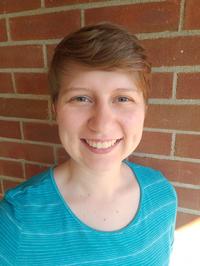Julianna Richie
Fall
2018
Alumni Spotlight
Julianna Richie
BS Physics, Southern Illinois University, Carbondale
What she does:
Richie is a research technician and the contact point for the MINT program at the University of Michigan. MINT, or Multimodal Integrated NeuroTechnology, is a technology hub aiming to advance scientific tools for the neuroscience community. Richie works on the carbon microthreads initiative, which turns carbon fibers into electrodes that can read brain activity. She builds and tests probes, helps users debug problems, and promotes the probes to labs that might be interested in using them.
How she got here:
Richie spent all four years of her bachelor’s degree working in a materials lab, soaking up different aspects of materials science. She originally intended to work in energy (interning at the Colorado School of Mines’ Renewable Energy Materials Research Science and Engineering Center, where she worked on iron sulfide cathodes), but decided to apply for a “software job” at UMich—a job that evolved into her current research technician position. “They said, ‘Our grant has changed and you’re actually going to be doing this,’ and I said ‘Cool, bring it on.’” The researchers at UMich were using cyclic voltammetry (a concept used in energy work) to track chemical reactions in the brain, so Richie’s research experience with renewable energy materials became a huge advantage.
Best part about her job:
“The most rewarding part is knowing that the things I am fabricating on a daily basis are actually getting used in studies that are going to help us understand how the brain works. I get to talk to people who want to collaborate with us because they think they can help people having a stroke, or help reduce overdoses. Knowing that actual research is happening is rewarding.”
Most frustrating part of her program:
“I am a physicist in a biology lab and I don’t know a lot of the
nomenclature. In meetings I’m taking frantic notes, then going back and looking things up and saying, ‘Oh, that’s what they were talking about.’ But I love the challenge of collaborating and talking to new scientists. It’s challenging to come in and be brand new and not know anything, but then I know these other things from my physics background that connect to what we’re doing. It’s exciting to find out where the connections come from.”
How she uses physics:
“Everyone in my lab has a background in biology or engineering, and I come in with physics experience. In engineering, you get the equations and use them to make a new, awesome thing. In physics, it’s like, ‘Well, how did we even get the equation?’ So in the lab, when we’re faced with a problem, I’m always asking how we got to that problem in the first place. I’m coming at problems from a different angle.”

